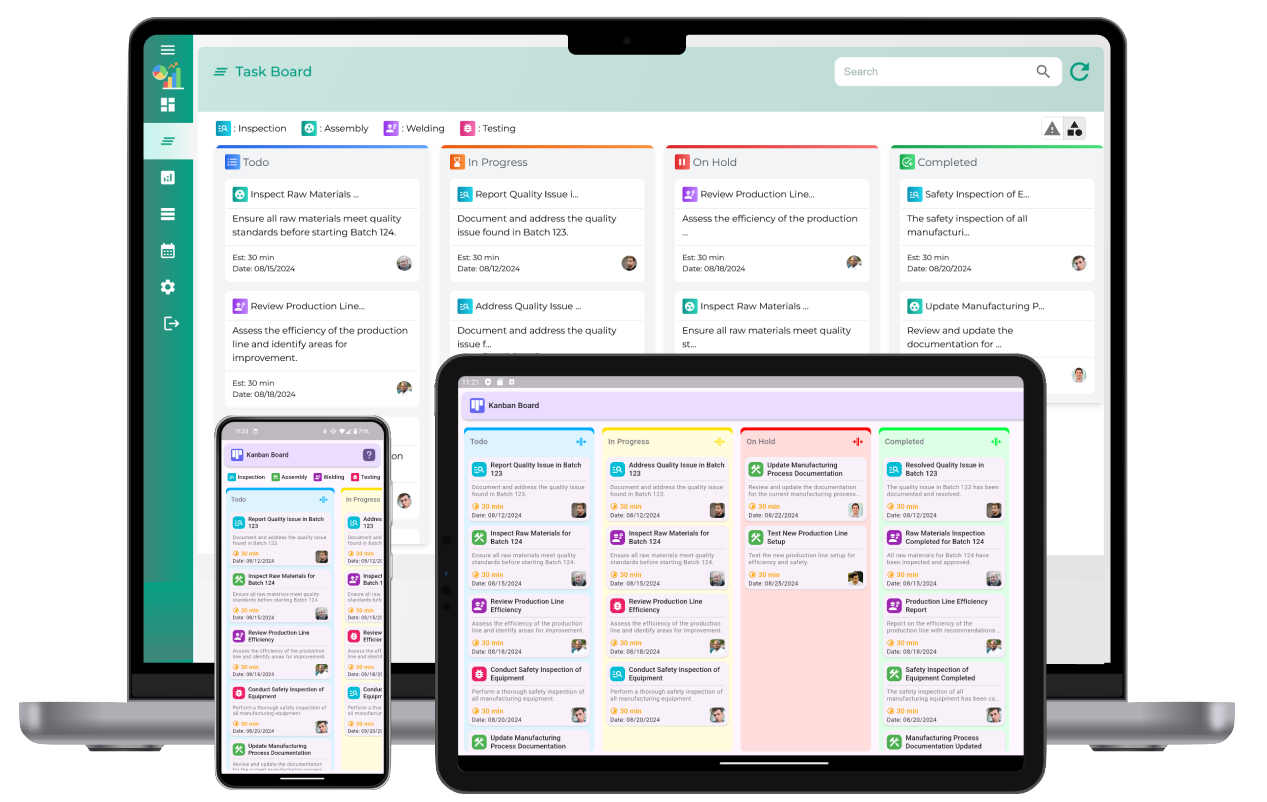Kanban is a workflow management method that helps teams visualize tasks, optimize efficiency, and improve productivity. It is widely used across industries, including manufacturing, software development, healthcare, and logistics, to streamline operations and ensure continuous improvement.

1. Understanding Kanban Principles
Before using Kanban effectively, it is essential to understand its core principles:
- Visualize Work: Represent tasks and workflows on a Kanban board to gain real-time visibility.
- Limit Work in Progress (WIP): Set task limits per stage to avoid bottlenecks and maintain workflow efficiency.
- Manage Flow: Ensure smooth progression of tasks across different workflow stages.
- Make Process Policies Explicit: Define clear rules and guidelines for managing work.
- Implement Feedback Loops: Conduct regular reviews and adjustments for continuous improvement.
- Improve Collaboratively: Optimize processes based on team feedback and performance data.
2. Setting Up a Kanban Board
Kanban boards are essential tools for managing work visually. A basic Kanban board consists of the following columns:
- Backlog: Tasks that need to be completed but are not yet prioritized.
- To Do: Tasks that are ready to start.
- In Progress: Tasks currently being worked on.
- Review: Tasks that require validation or approval.
- Completed: Successfully finished tasks.
3. How to Implement Kanban for Task Management
Step 1: Define Workflow Stages
Start by mapping out the stages of your workflow based on your specific process. This ensures that all tasks move systematically through each stage.
Step 2: Add Tasks to the Kanban Board
Create individual task cards for each work item. Include details such as:
- Task Name: A brief description of the work.
- Assigned Team Members: The person or team responsible for completing the task.
- Priority Level: Indicate urgency (High, Medium, Low).
- Due Date: The expected completion date.
- Status Updates: Any relevant progress details.
Step 3: Set Work in Progress (WIP) Limits
Limiting the number of tasks allowed in each workflow stage prevents overloading and helps maintain a steady pace of work.
Step 4: Move Tasks Through the Workflow
As work progresses, move task cards from one column to another. This provides a clear visual representation of work status and prevents delays.
Step 5: Conduct Regular Reviews
Hold periodic team meetings to evaluate task progress, identify roadblocks, and optimize workflow efficiency.
4. Kanban Best Practices
To maximize the benefits of Kanban, follow these best practices:
- Keep the Board Updated: Ensure all team members actively maintain the Kanban board with real-time updates.
- Limit Multitasking: Encourage team members to focus on fewer tasks to increase efficiency.
- Use Performance Metrics: Track cycle time, lead time, and throughput to measure workflow effectiveness.
- Encourage Team Collaboration: Regular communication enhances teamwork and prevents misunderstandings.
- Review and Improve: Continuously refine the Kanban process based on team feedback and performance analysis.
5. Future of Kanban in Workflow Management
Kanban is evolving with automation, artificial intelligence, and predictive analytics. These advancements help teams optimize task allocation, identify bottlenecks, and enhance overall productivity.
By effectively implementing Kanban, businesses can streamline workflows, improve task management, and create an efficient work environment.
How do you use it for Kanban?
What is Kanban, and how is it used?
Kanban is a visual workflow management method used to track tasks through different stages, ensuring efficiency and organization.
What are the key components of a Kanban system?
The key components include a Kanban board, workflow stages, task cards, WIP limits, and performance tracking metrics.
How do you set up a Kanban board?
A Kanban board is set up by defining workflow stages (e.g., To Do, In Progress, Done) and adding task cards to represent work items.
What are the different stages in a Kanban workflow?
Common workflow stages include Backlog, To Do, In Progress, Review, and Done, but they can be customized to fit specific needs.
How do task cards work in Kanban?
Each task card represents a work item, containing details like task name, priority, due date, and assigned team member.
What are Work-in-Progress (WIP) limits, and why are they important?
WIP limits control the number of tasks in progress to prevent overload and ensure a steady workflow.
How can Kanban help improve workflow efficiency?
Kanban improves efficiency by visualizing work, reducing bottlenecks, and ensuring smooth task progression.
What are the best practices for managing tasks in Kanban?
Best practices include keeping task descriptions clear, setting priorities, and regularly updating task statuses.
How does Kanban support team collaboration?
Kanban enhances collaboration by providing a shared view of work, ensuring transparency and better communication.
How do you track progress in a Kanban system?
Progress is tracked by monitoring task movement across workflow stages and analyzing key performance metrics.
What are the common challenges when implementing Kanban?
Challenges include resistance to change, lack of task updates, and ineffective WIP limit enforcement.
How can Kanban be customized for different workflows?
Kanban can be customized by modifying columns, adding labels, and setting automation rules to align with workflow needs.
What metrics are used to measure Kanban performance?
Common metrics include cycle time, lead time, throughput, and task completion rates.
How does Kanban support continuous improvement?
Kanban promotes continuous improvement by identifying inefficiencies and enabling process optimizations.
What are some tips for successfully using Kanban?
Success tips include keeping WIP limits realistic, updating tasks regularly, and reviewing the board frequently.